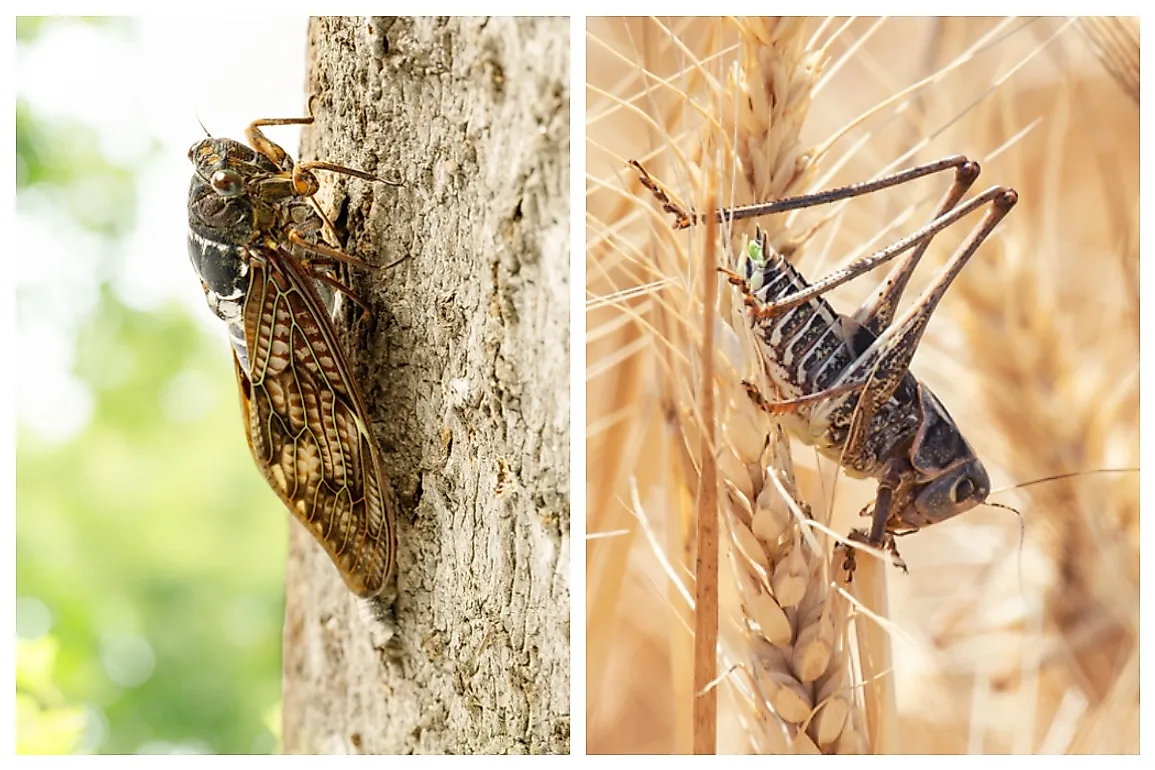Are Locusts and Cicadas the Same Insect?

During summer and winter, all kinds of insects become common making it perhaps the best time to interact and study their behaviors. Some of the common insects during these periods are the locust and cicadas, which normally come in swarms. The two names have been used interchangeably to refer to what they think as the same insect. However, locusts and cicadas are two different insects that do not even belong to the same order. In fact, the two insects have different physical characteristics. Despite their physical differences, locusts and cicadas have behavioral similarities. Locusts swarm and periodical cicadas are also thought to swarm although they actually do not swarm but rather spend their time above the ground in large numbers.
What Are Locusts?
Locusts are species of grasshoppers from the family Acrididae. No taxonomical distinction has been made between the grasshopper and locust with the only distinction being the swarming behavior. Locusts are mainly solitary insects, but under certain conditions they change behaviors and habits, becoming gregarious. During their growth cycle, the wingless nymphs form bands which transform into swarms when they develop wings. Both the swarms and the bands move around and rapidly eat away leaves and grass. The adult locusts can travel a long distance and consume a lot of vegetation where they settle because of their powerful fillers. The swarming behavior is caused by the frequent touching of the hind legs due to overcrowding. A swarm contains millions of locusts that can destroy a field of crops in minutes. When they run out of food, they will all fly together in a swarm to another location and can fly to about 100 miles in a day.
What Are Cicadas?
Cicadas are insects in the order Hemiptera. There are approximately 3,000 known species of cicadas, living throughout the world and many other species remain undescribed. This insect has a pair of eyes that are wide apart, membranous front wings, and short antennae. It has three joints on its tarsi and 3-6 segments, including the seta at the tip. The nymphs cannot jump while the adult is a feeble jumper. The forelimbs of the nymphs are adapted for underground life. Cicada has two pairs of membranous wings with the wing venation varying from one species to another. Cicadas become active in large number at once. Their sound of invasion can be . The male produce “singing” sound using the tymbal which lies below the anterior abdominal region. The reflexing and relaxing of muscles shake the tymbal, leading to the loud clicking and buzzing sound.
Are Cicadas as Harmful as Locusts?
Locusts are not dangerous nor do they contain toxic or poisonous substances. However, they cause destruction to vegetation, leading to crop loss if not properly controlled. Cicadas are not generally harmful but they can make a lot of noise. They sometimes poke people with their proboscis which can be painful. Unlike locusts, cicadas do not destroy crops. They do not have the mouthparts that are necessary for feeding on flowers or fruits. Cicadas mainly feed on woody trees.











